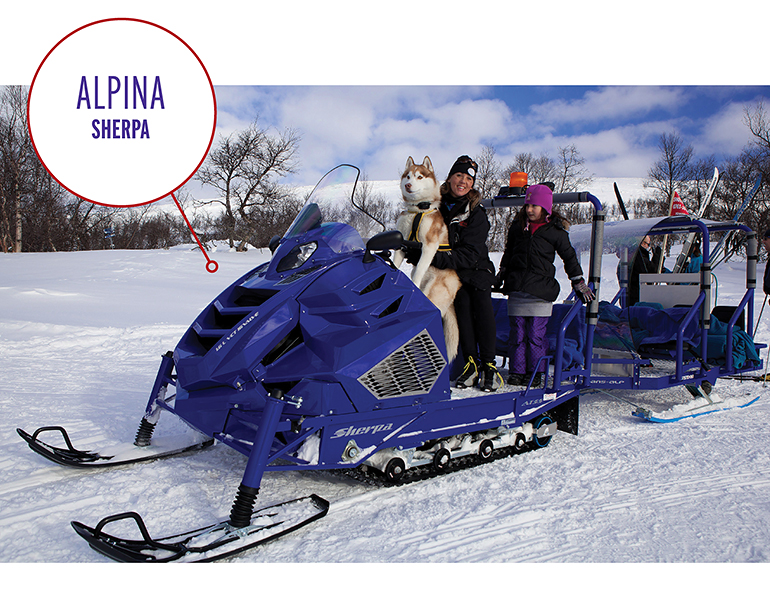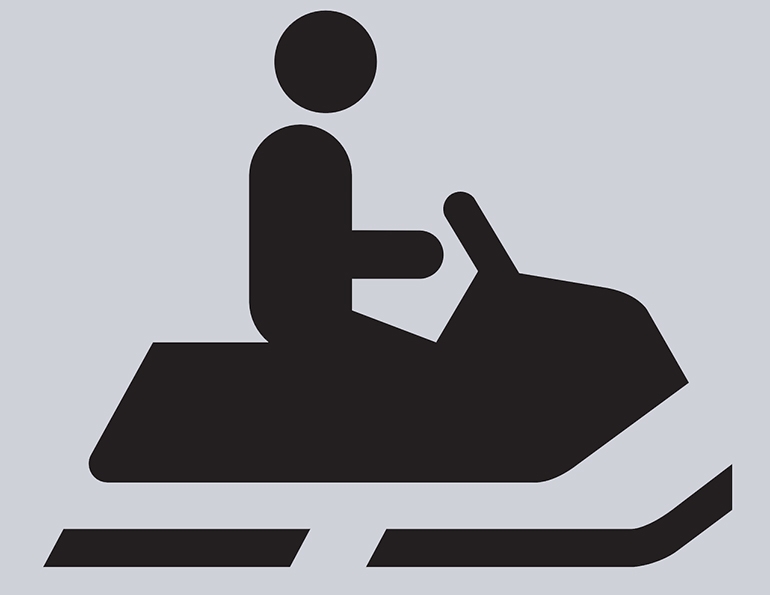Summer capital season is upon us, and it’s time to turn over a few snowmobiles in the fleet—kick out some smoky old clunkers and replace them with the best option currently available. What is the best option, though? The answer depends on a host of factors, many of them specific to your particular operation.
Like all machinery and technology, snowmobiles are evolving constantly in a quest to provide better performance, value, more features, and lower emissions. Here’s a look at the current options from various manufacturers to help determine the best fit for your unique on-hill needs and types of usage.
Who’s Driving?
But first, a few important considerations: who will be driving your sleds? How much training do drivers need? How much training will they receive? We are all challenged to get our “never-evers” skilled enough to be confident riders who stay out of trouble. How do we get new staff comfortable operating a snowmobile on what is essentially advanced terrain?
Maintenance is a consideration, too. Over the years I’ve noticed a wide range of operating philosophies—from resort to resort, and department to department. The snowmaking manager at one resort told me, “You have to wreck snowmobiles to make snow.” As a result of that philosophy, snowmakers there did not take care of the machines and did, in fact, wreck them on a regular basis.
Conversely, Mount Snow’s longtime snowmaking manager Randy Barrows knows that a broken-down snowmobile negatively affects how he and his staff can perform their jobs. So, his team’s snowmobiles were not only the nicest at the mountain, but the nicest, best-kept resort snowmobiles I’ve ever seen. So a leader’s philosophy toward snowmobile use and treatment could be a factor in deciding which machines to purchase.
And, of course, the experience level of your staff and the realistic training time they will get should also be strongly considered. What type of machines should we equip these folks with?
Three Classes
Like the riders themselves, machines vary in their capabilities and strengths. There are snowmobiles that try to be work rigs with handlebars, and those that are essentially motorized athletic equipment. Snowmobiles used at resorts generally fall into one of three categories: work, touring, and mountain.
WORK snowmobiles are basic, no frills, with features geared toward, well, work. These machines typically have multi-range gearboxes, wider tracks, heavier (stiffer) suspension, basic seating for two, a rugged towing hitch, larger cargo racks/space, and basic engines. These features allow the machine to haul loads and people, and be rugged enough to last awhile—all at a reasonable price.
Work machines are typically slower, and somewhat more stable due to a low center of gravity and wide track. They’re always heavy, so don’t get ‘em stuck! The power and gearing means they have a lower top speed—probably a good thing for many resort operators. They are not performance machines. Work snowmobiles are a good choice for departments such as F&B, snowmaking, ski school, and some lift maintenance.
TOURING machines are designed for two people to cover lots of miles on snowmobile trails in comfort. Still, they are a popular choice at resorts because they’re affordable, have decent power/weight, decent handling for better riders, and “two up” seating. Lift ops, ski patrol, lift maintenance, and terrain parks could put this type of sled to good use.
MOUNTAIN SLEDS: Some mountains have too much “deep” and too much “steep” for typical work and touring machines to get anyone or anything where it needs to go. For the guys that clear the lifts, break the trails, and deem the slide paths safe, a mountain sled is the ticket—a high-performing, lightweight piece of athletic equipment with a badass engine. These machines are easy to tip over—bad for the novice, ideal for veteran riders who slice carved turns like a water skier. Fit, veteran riders can exploit what these sleds offer to help get the mountain open earlier when conditions are tough. Senior snow safety and lift maintenance personnel can often use mountain machines to their full potential.
The Latest
To gain some perspective on the latest trends and learn what’s available in the snowmobile market, I talked with Rich Weller, owner of Weller Recreation in Kamas, Utah—a dealer that’s been around since 1958. Rich is enthusiastic and knowledgeable about the products he carries, which is a wide range of competing brands, including Yamaha, Polaris, and Ski-Doo.
Similar to other motorized vehicles, the engines of snowmobiles are being refined to run cleaner and more powerful than ever before. “The EPA has been mandating cleaner motors, so that is driving the motor technology, and cost,” Weller says. “Manufacturers are either going four-stroke or they’re cleaning up two-strokes.”
When asked to define “clean” vs “dirty,” he says anything with a choke is “dirty,” i.e., any snowmobile that has carburetors. Two-strokes with carburetors are the highest polluting. “Clean” snowmobiles either use fuel injection on a four-stroke, or direct (in the cylinder) fuel injection on a two-stroke. Most snowmobile engines lack catalytic converters to clean up emissions, so even a clean snowmobile is relatively dirty. But at least things are moving in the right direction.
And overall, the engineering and technology of today’s machines is amazing. In the last 10 years, machines have gotten lighter, cleaner, more fuel efficient, and longer lasting. A consequence of the added technology, though, is some of today’s machines are not as easy to maintain. The days of flipping the hood open and having an engine on the bench in 20 minutes are mostly gone.
The Options
Weller says there’s a final consideration: budget. Fortunately, there’s a wide range of choices in that regard. Most of the top manufacturers offer a wide variety of different models, engineered for different uses. Polaris offers 58 models, Arctic Cat, 47 models, and Yamaha, 12. Ski-Doo has a whopping 210 models. Of course, only a few are really suitable for use at mountain resorts, but still too many to list entirely here. We’ve chosen to highlight a few here that are popular with mountain resorts.
POLARIS
WORK: The Polaris 550 fan Widetrak LX is an old-school sled with a 20” track and a two-stroke carb’ed engine. With its hi/low range and reverse, it’s “probably more tailored to the ski hill companies,” says Weller. It’s a heavy machine at 613 pounds, but Weller says unless you’re climbing deep powder, “Weight isn’t as important as stability when you’re on the mountain.”
TOURING: The Indy LXT 550 fan is an entry-level, low-cost touring machine powered by a two-stroke engine with carburetors. At just $8,199, it’s a popular fleet/rental machine. Both the Widetrak LX and the Indy LXT have roughly 60 hp.
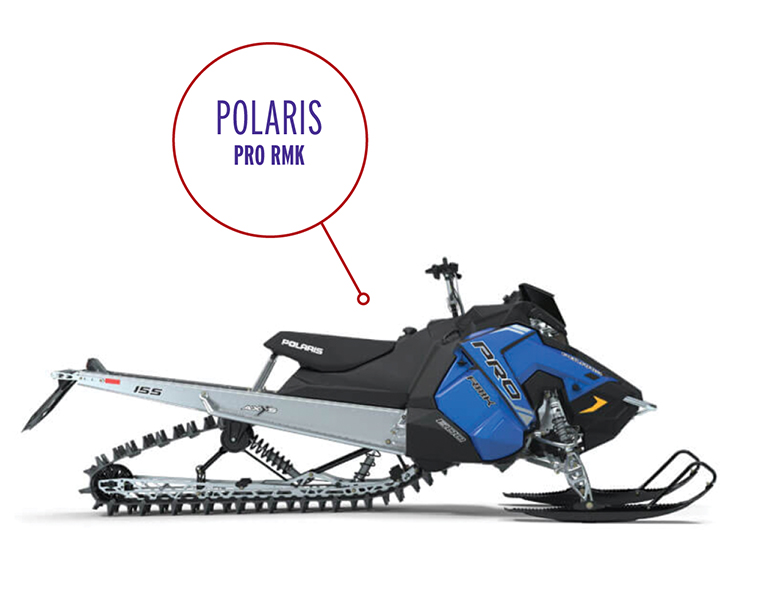
MOUNTAIN: With more than double the horsepower output as the LX and the LXT and weighing only 412 pounds (55 pounds less than the LXT), the Pro RMK is quite the machine and is also durable—but only experienced operators should be given the keys. “It’s built for lightweight and it will get there, the problem is you can’t turn that horsepower over to just anybody,” says Weller. “You have to designate who is going to handle that.”
ARCTIC CAT
Twenty years ago, I had a fleet of Arctic Cats, and they were difficult to own. At the time, I wondered how committed Arctic Cat was to snowmobiles. I’m wondering the same thing even today—dealers and company reps weren’t responsive to several requests for information. Nonetheless, Arctic Cat is one of the big companies, so it’s worth including here.
WORK: The Bearcat is still around as the company’s primary work sled. It shares the same specs as Yamaha’s work machine. The Bearcat XT has a two-stroke 540-fan motor with carburetors, about 55 hp, a wide 20-inch track, hi/low range and reverse gear box with a budget-minded price point of around $9,300.
TOURING: Arctic Cat has six touring options in its lineup. The most affordable with two-up seating is the Lynx 2000 LT, priced at around $7,300. It uses a 570cc two-stroke engine, a standard 15-inch track, single range gearbox, and electric reverse. Moving up the company’s touring lineup in price gets you cleaner engines with more power, in the same basic chassis.
MOUNTAIN: The entry-level machine of six in this class is the M6000 SE, which features a fuel-injected 600cc two-stroke, electronic reverse, and a good power/weight ratio for getting places in deep powder.
SKI-DOO
Weller says, “Ski-Doo is on top of the world right now.” Ski-Doo’s president predicted years ago that the company would own the four-stroke market, and now, Weller notes, that has come true. While Yamaha is also known for four-strokes, “Ski-Doo has more four-stroke snowmobiles than Yamaha has snowmobiles!” he says.
The company’s E-tec motor and the variety of features the company offers have put Ski-Doo sleds on top, he says. Features especially set the Skandic work sleds apart. All have 20” or 24” tracks, high-torque engines with multi range gearboxes and large cargo racks, plus a range of engine choices.
WORK: The venerable Skandic WT 550 fan has a 20-inch track, dual range transmission, and is competitively priced at under $9,500. Moving up the line, the Skandic WT 600 ACE has a four-stroke 600cc motor (it also comes in 900cc). Weller says it’s very durable, but that comes at a cost: about $11,000. That’s offset over time by fuel economy (29 mpg), no two-stroke oil cost, and stretched service intervals. The Skandic SWT 900 ACE ($13,000) has the same features as the WT, but comes with a super wide 24-inch track and 900cc motor. Both offer the option of a “learning key,” which limits speeds to a 25 mph maximum.
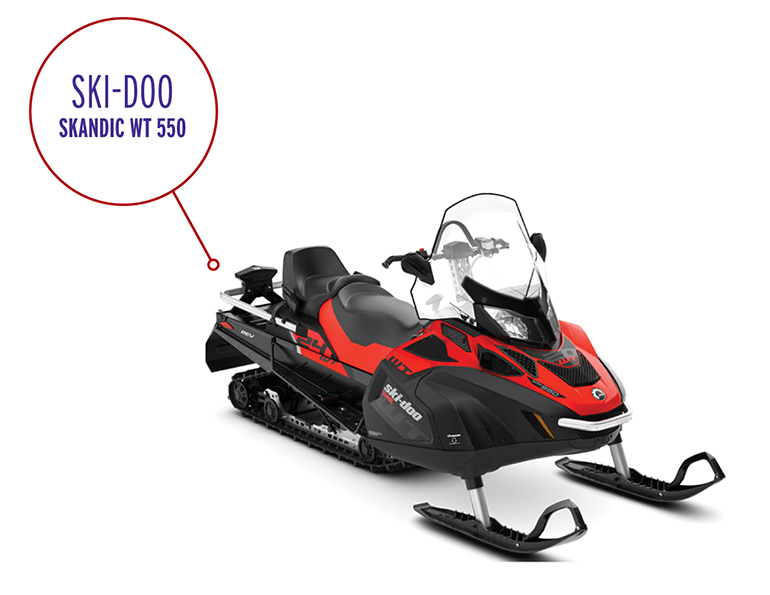
TOURING: The Expedition series is similar to the Skandics, but these sleds have both utility and rideability. Sizes run from 550cc up to 1200cc four-stroke. The Expedition SWT has a 24-inch track, eight inches wider than some competitors’ machines, with wish bone suspension and a wide ski stance at 41 inches.
MOUNTAIN: The Ski-Doo Summit SP 600R uses a 16-inch-wide track, an E-tec “clean” two-stroke engine, and the SHOT starting system (a battery-less electric starting system that uses a capacitor). For mountain guys going to the top, this is a choice machine. The entry level machine is the Summit Sport, which Weller says is good as a fleet sled, especially with its $8,450 price tag.
YAMAHA
WORK: I thought Yamaha had phased out the VK540 when the four-stroke models started replacing everything else in Yamaha’s lineup, but the VK remains, and is really the only viable work sled in its lineup. It’s a 540cc, two-cylinder, two-stroke machine with a 20-inch track, and weighs a heavy 645 lbs. It has a large cargo area/rack on the rear and multi range gearbox with reverse.
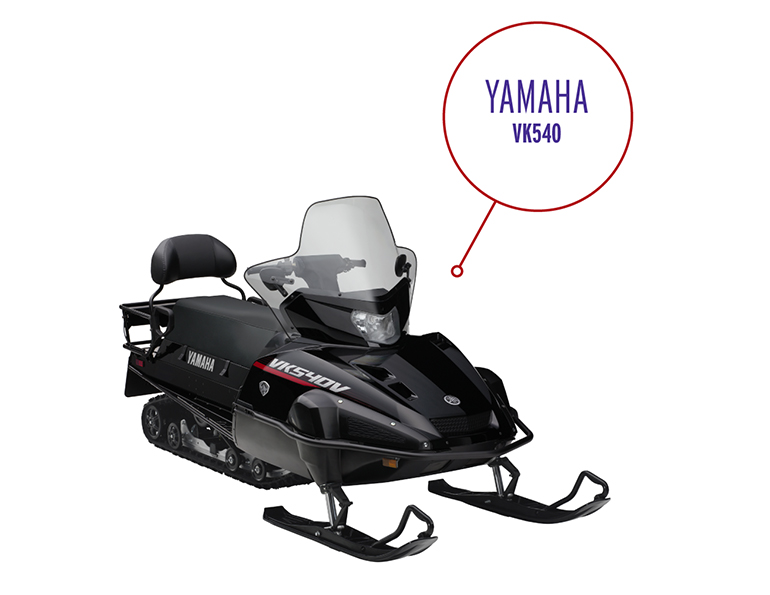
TOURING: Yamaha has no touring-class machines with two-up seating.
MOUNTAIN: One option: the $17,300 Sidewinder M-TX.
ALPINA
WORK: The Sherpa ($37,000) is unique, the Suburban of snow machines. With dual 20-inch tracks, it has four points of contact with the snow. The company says the sled is so wide and stable that operators don’t need to lean when turning, which makes it easier to drive than conventional sleds. It can carry three passengers and tow nine with a payload of 700 lbs. It’s heavy, at 1,300 lbs., and has a top speed of around 40 mph. It’s powered by a 1.6L Ford car engine, but has typical dual range with reverse. The engine utilizes the Ford OEM emissions equipment, so it may be the only snowmobile made with a catalytic converter that could pass the same emissions criteria as a car. Since it’s a car engine, maintenance consists primarily of changing the oil and filters.
